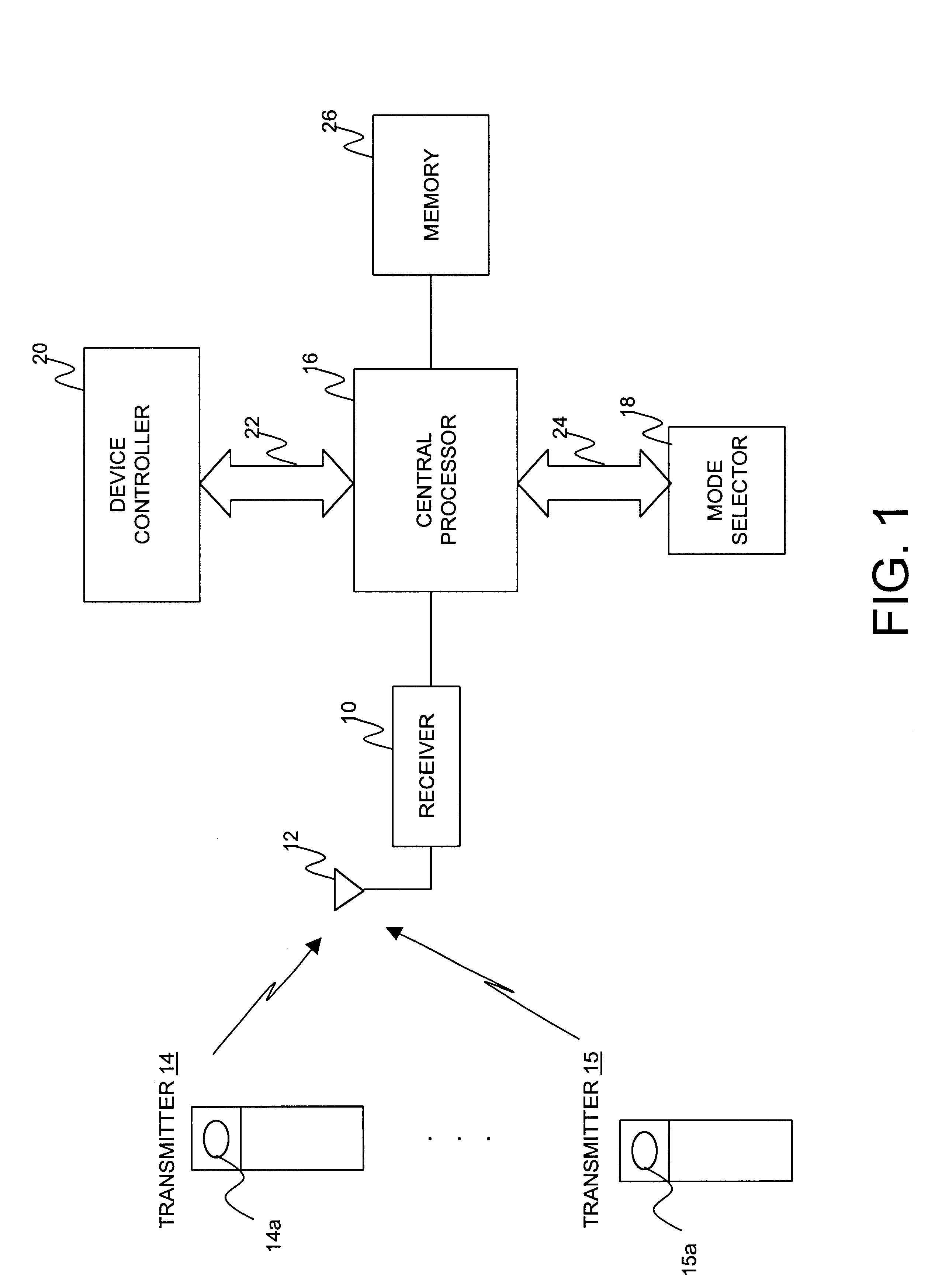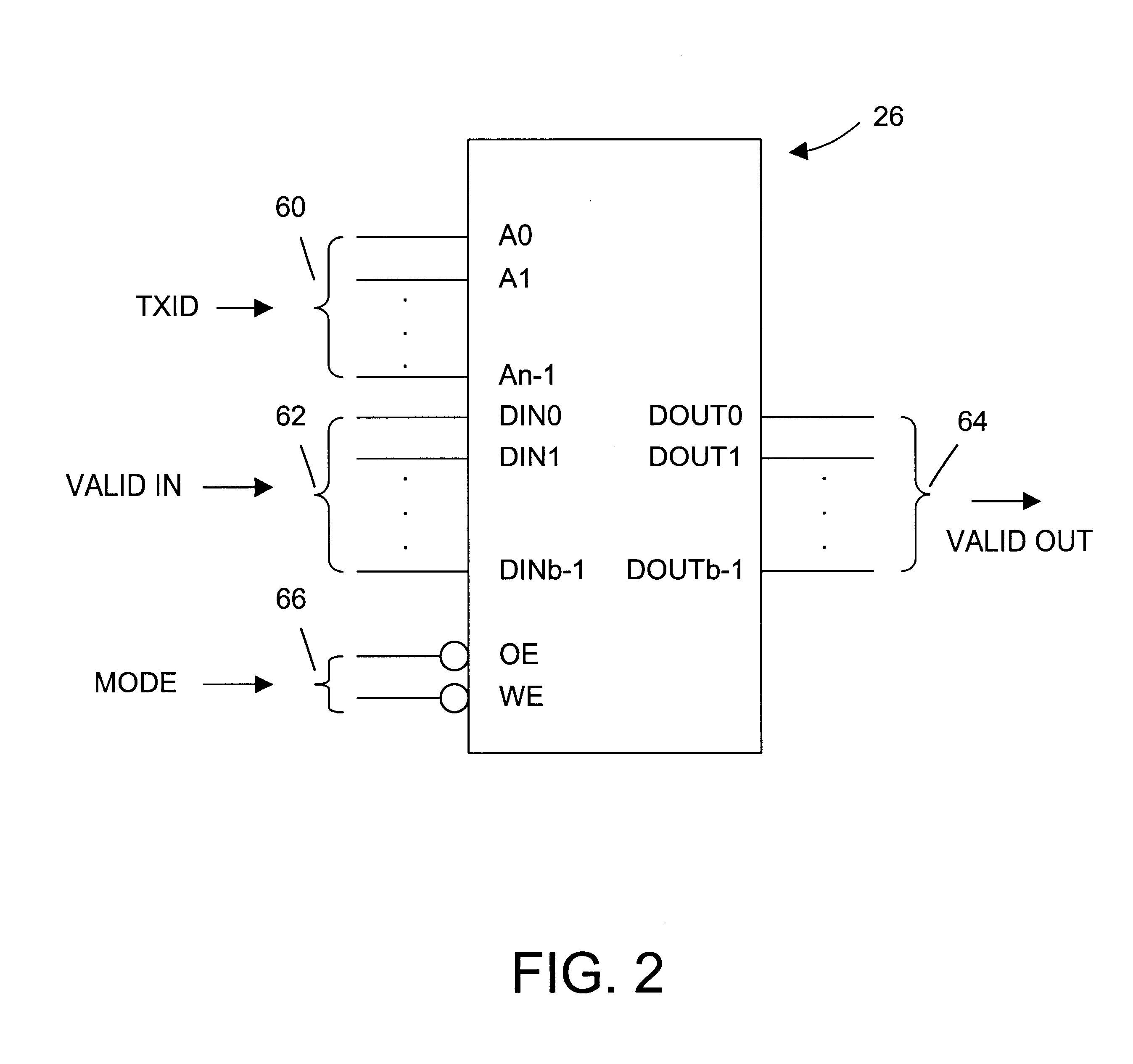Transmitter-receiver control system for an actuator and method
a technology of actuator and receiver, applied in the field of remote control of actuators, can solve the problem that the receiver no longer responds to the transmitter with the old code, and achieve the effect of faster actuator response time and system efficiency
- Summary
- Abstract
- Description
- Claims
- Application Information
AI Technical Summary
Benefits of technology
Problems solved by technology
Method used
Image
Examples
Embodiment Construction
FIG. 1 is a schematic block diagram of a control system for an actuator according to one embodiment of the invention. The actuator may include a garage door opener, gate opener, window blinds opener, security alarm trigger, light energizer, or any other apparatus capable of triggering action on a device being controlled.
The system preferably includes a receiver 10 having an antenna 12 for receiving signals transmitted by transmitters 14, 15. The transmitters 14, 15 and the receiver 10 respectively transmit and receive RF signals. However, infrared signals and other type of signals conventional in the art may also be exchanged between the transmitters and the receiver.
Each transmitter 14, 15 preferably includes a chip encoded with a unique transmitter ID which is preferably factory-determined at the time of making of the transmitter. Each transmitter 14, 15 further includes an actuation button 14a, 15a for operating the transmitter.
The receiver 10 is coupled to a central processor 16...
PUM
 Login to View More
Login to View More Abstract
Description
Claims
Application Information
 Login to View More
Login to View More - R&D
- Intellectual Property
- Life Sciences
- Materials
- Tech Scout
- Unparalleled Data Quality
- Higher Quality Content
- 60% Fewer Hallucinations
Browse by: Latest US Patents, China's latest patents, Technical Efficacy Thesaurus, Application Domain, Technology Topic, Popular Technical Reports.
© 2025 PatSnap. All rights reserved.Legal|Privacy policy|Modern Slavery Act Transparency Statement|Sitemap|About US| Contact US: help@patsnap.com



